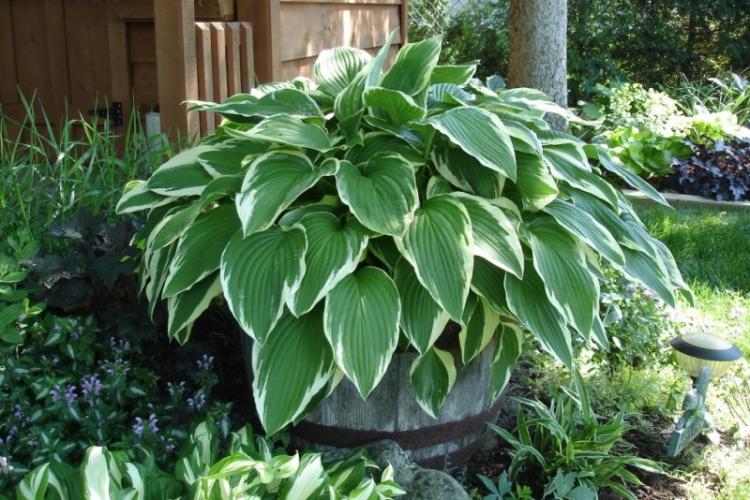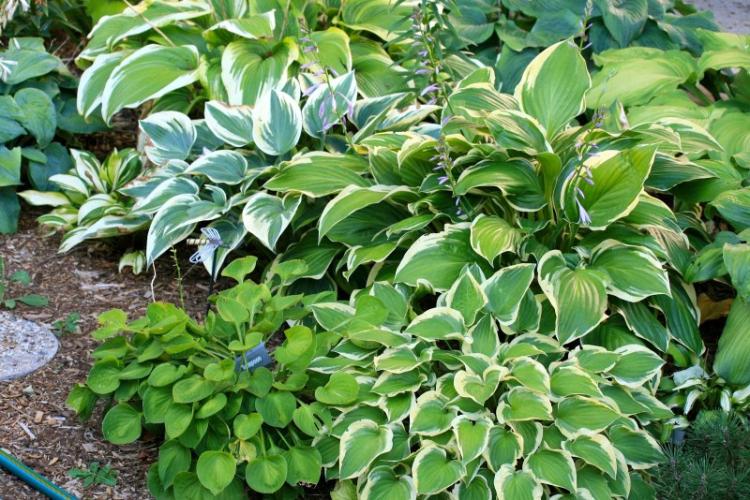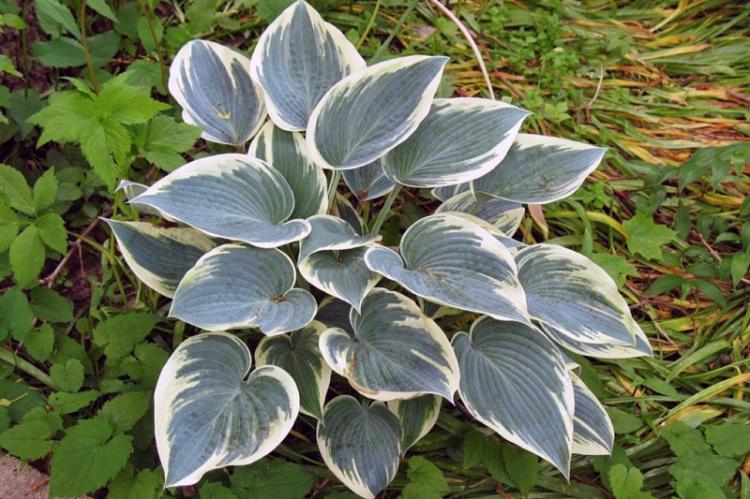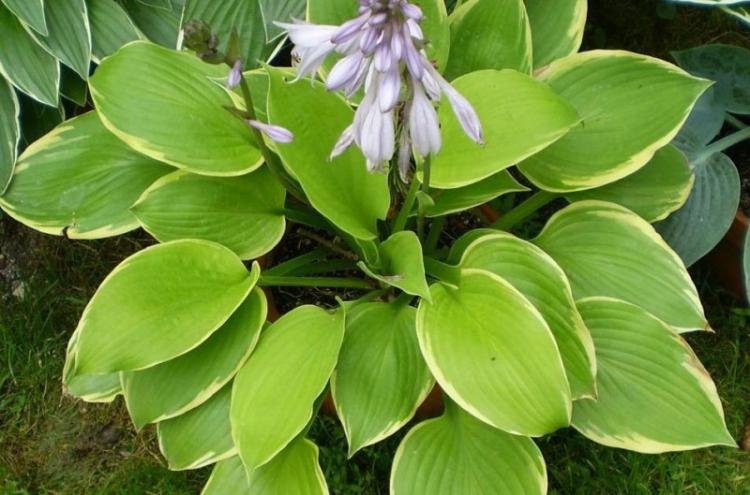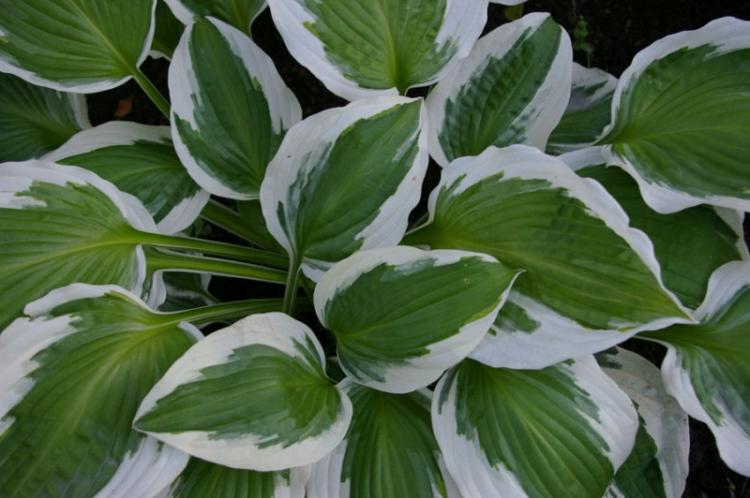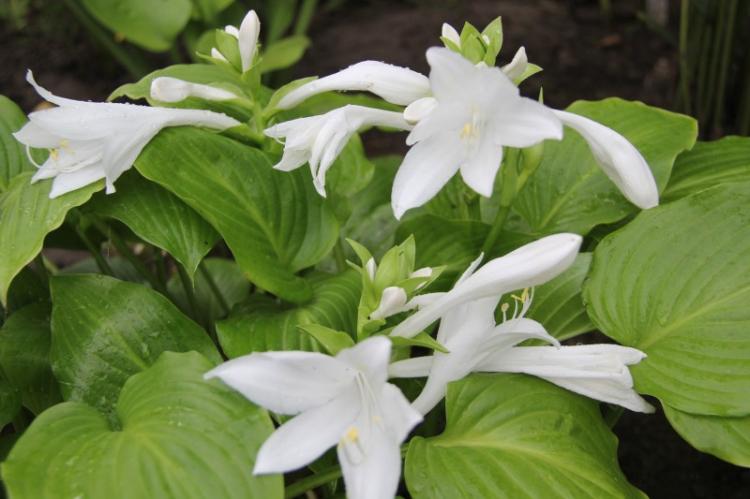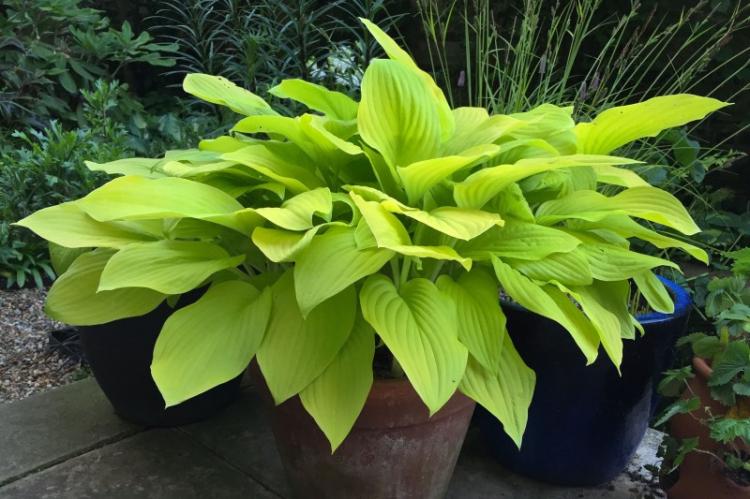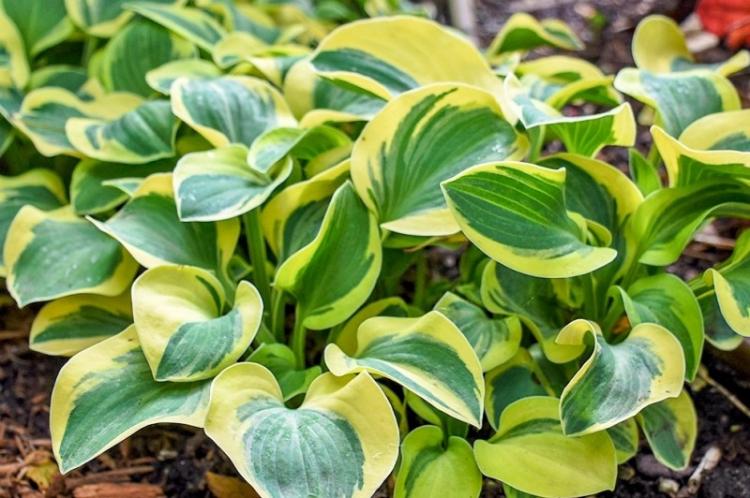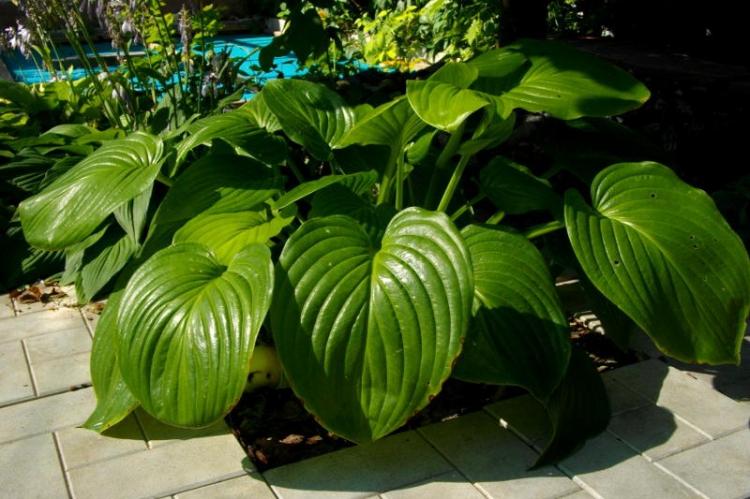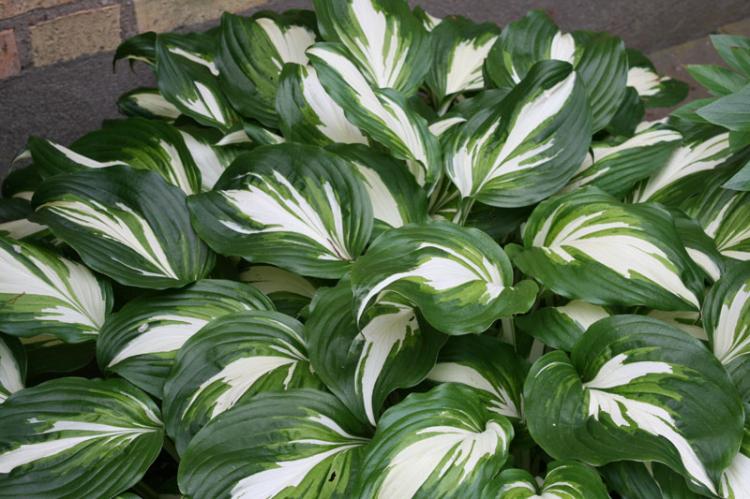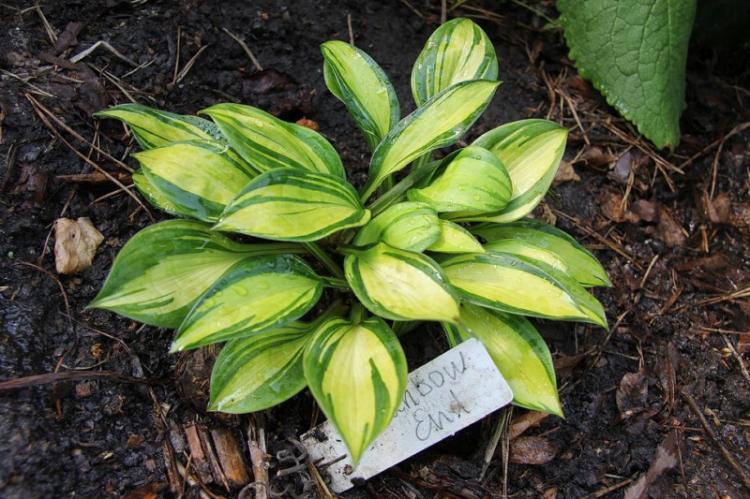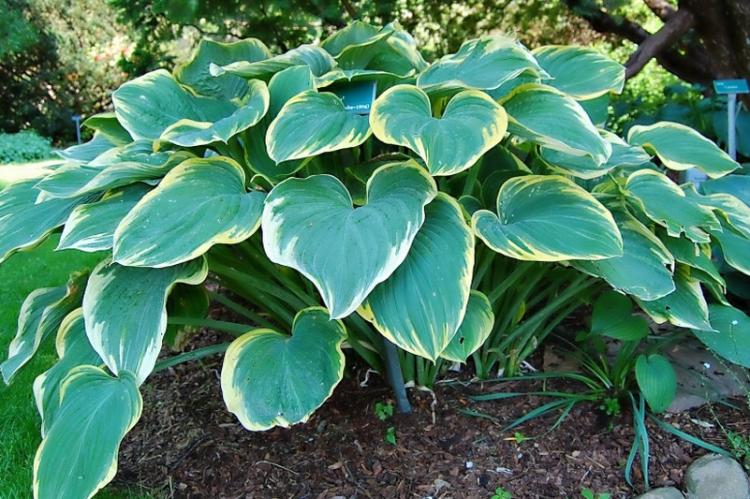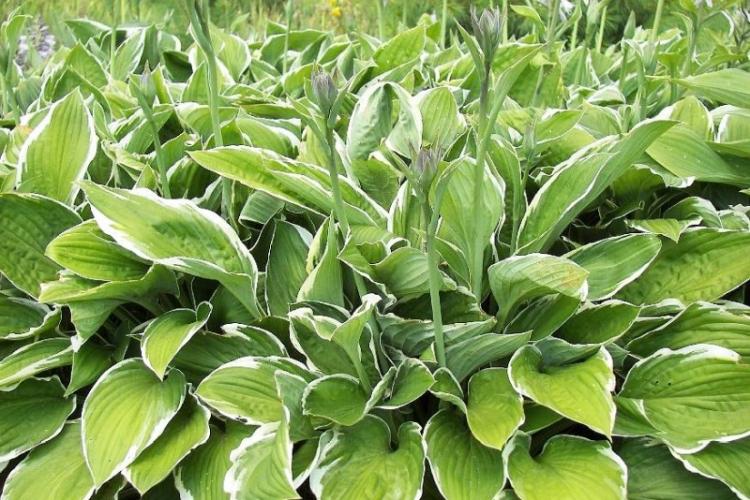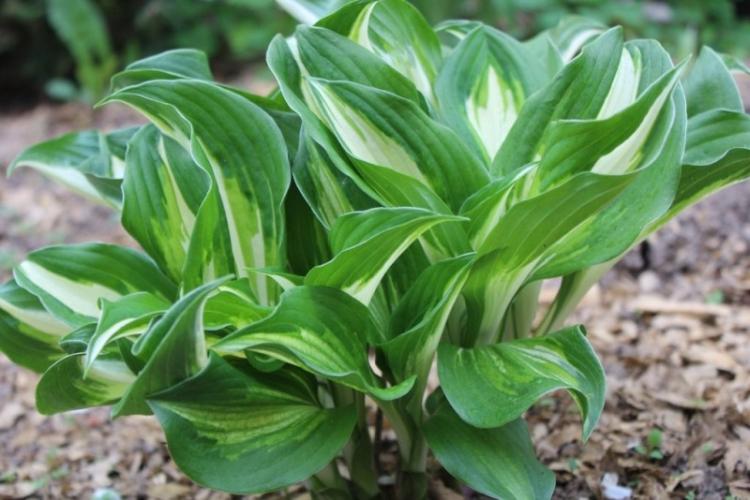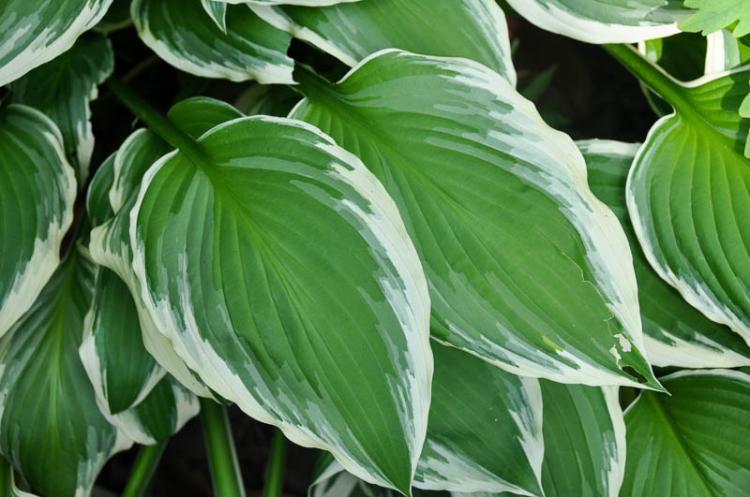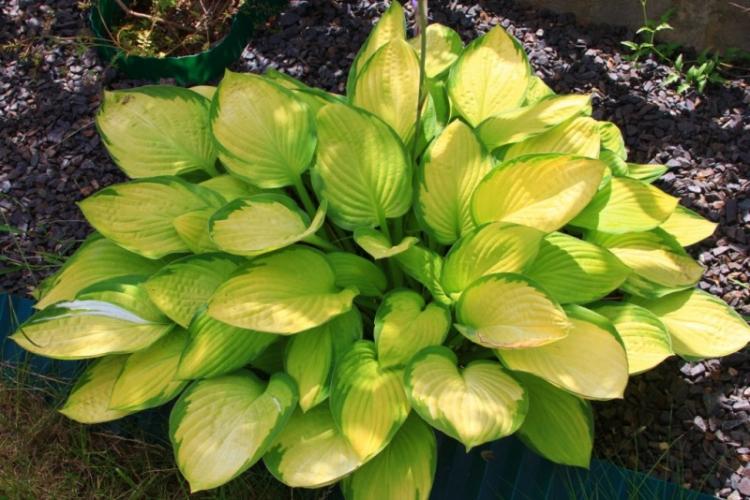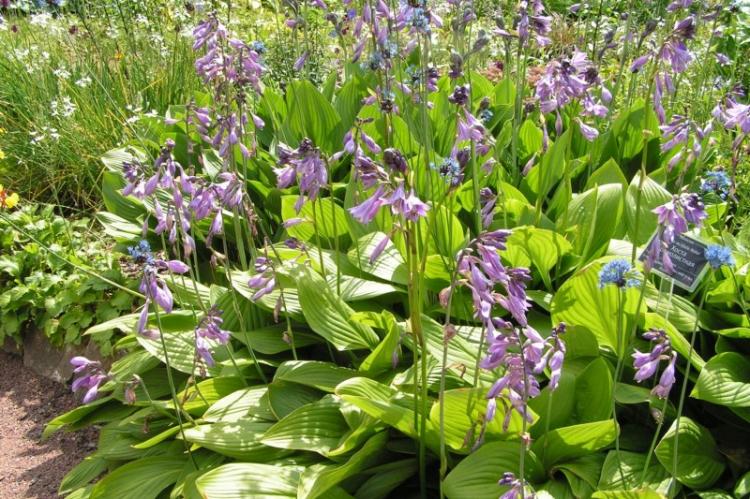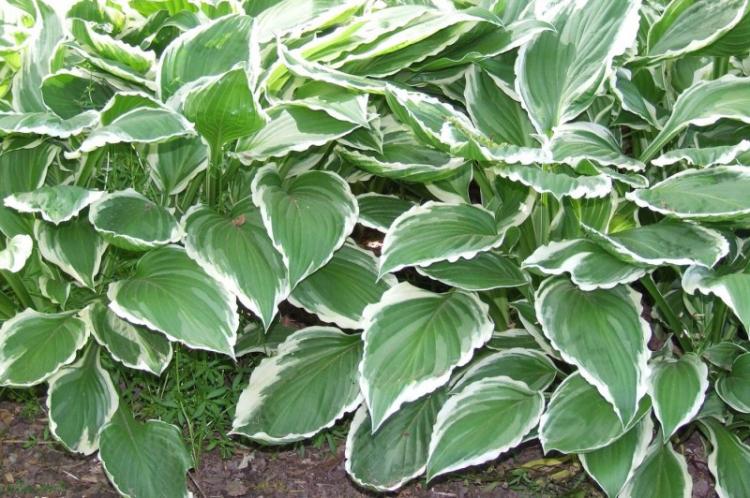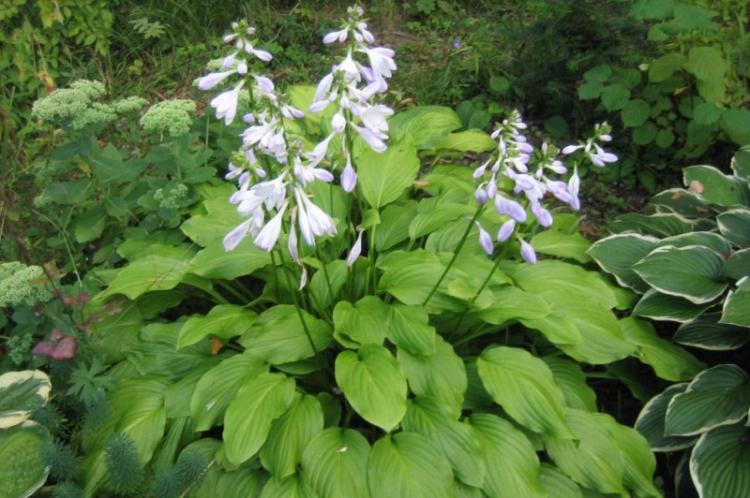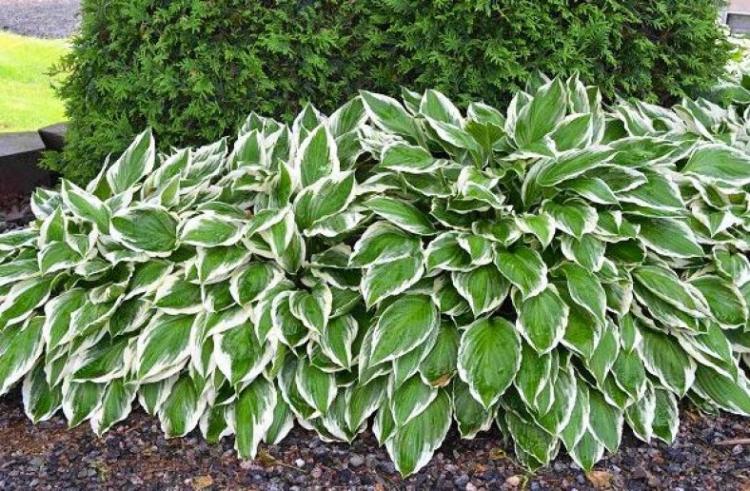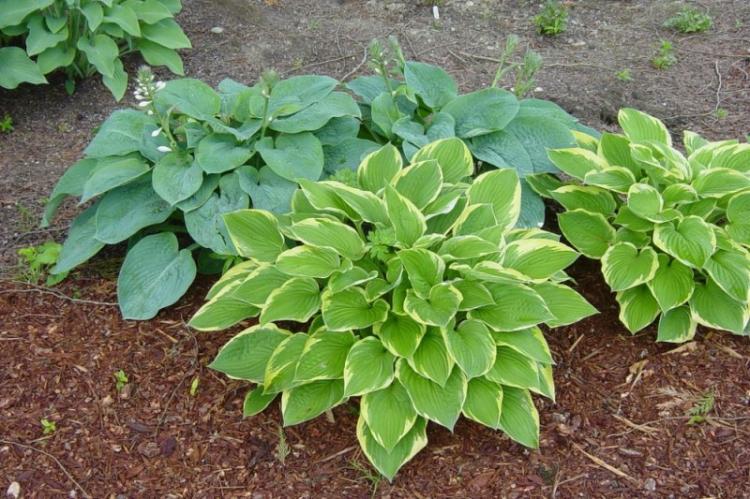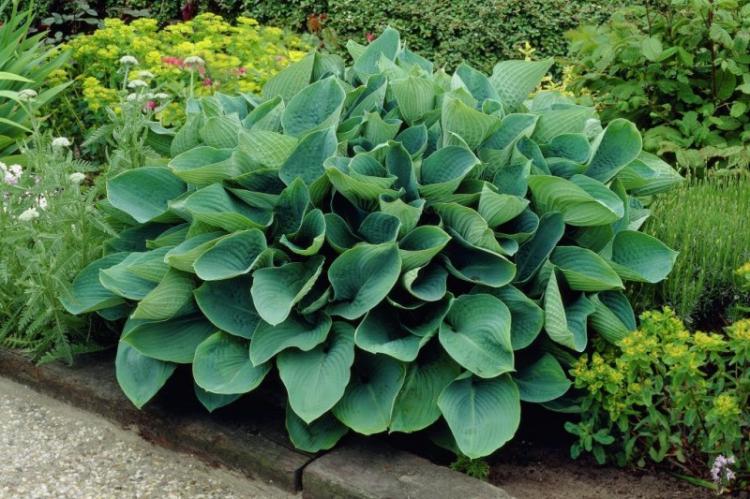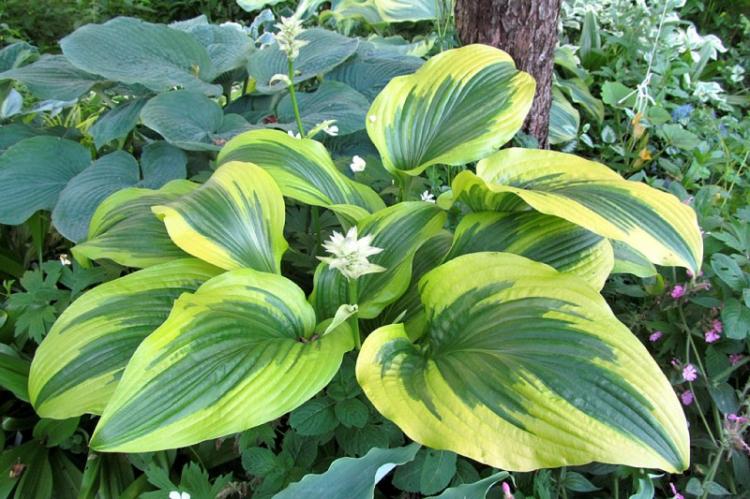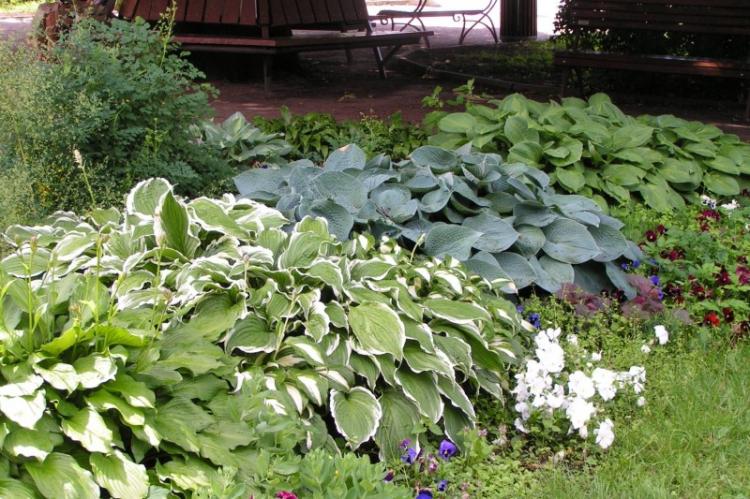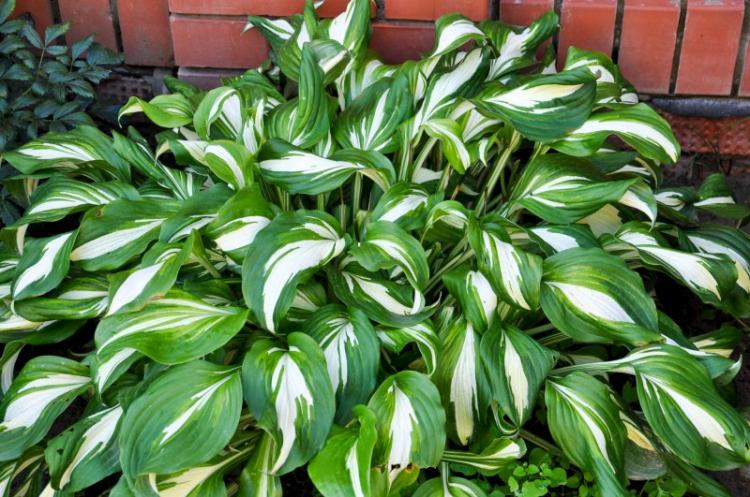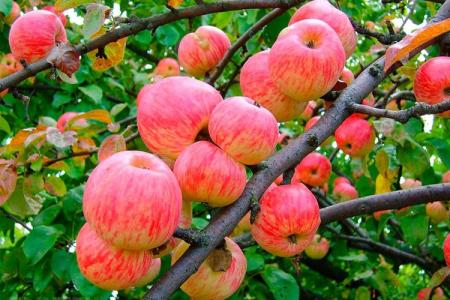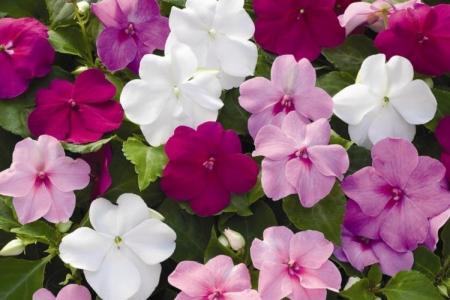
Have you been thinking for a long time with what is interesting to dilute garden flower seedlings? Or do you just prefer plants with decorative foliage rather than lush blooms? Then the host in all its diversity and versatility will certainly suit you. And we will tell you why it is remarkable, which variety to choose and how to care for it!
general characteristics
Only two decades ago, only rare gardeners and breeders knew the popular host today. Florists used it for their flower arrangements and that was it. Now the situation has changed radically, and a beautiful decorative deciduous perennial can be found in many areas.
For a long time, the unusual plant was attributed to daylilies and to asparagus, and over time, botanists isolated it into a separate family of the same name. The second name for hosts is funkiya, but it is almost never used in everyday speech.
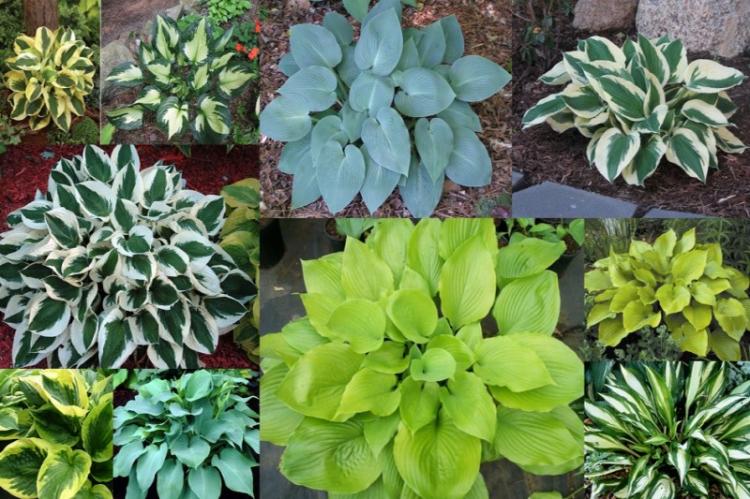
In the garden, the hosta goes well with lush ferns, conifers, geraniums, primrose, astilba or anemone. In landscaping, it is used as a beautiful groundcover with lush and vibrant foliage. There are even chameleon varieties, the shade of the foliage of which changes during the season.
The host is suitable for framing vertical flower beds, decorating garden paths and lawns, arranging gazebos. The smallest varieties hardly grow up to 10 cm, and the largest ones easily stretch over 70 cm.
For amateur flower growers, the host is good in that its numerous varieties easily interbreed with each other. So everyone can try to breed their own unique hybrids that easily take root and delight with longevity.
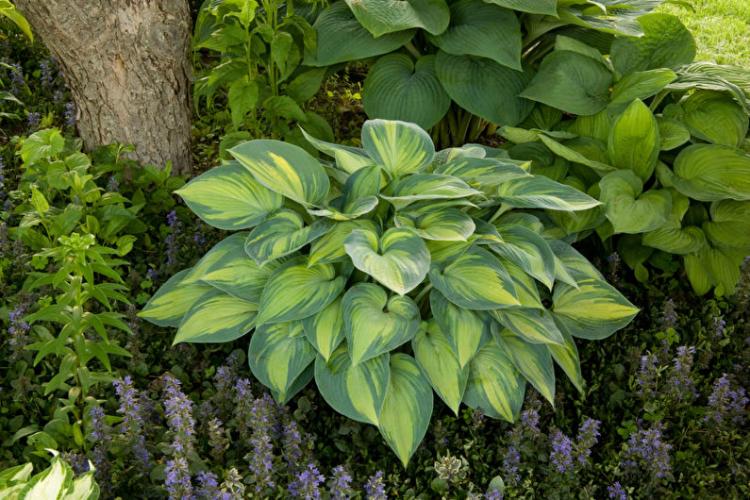
Host types
Florists and breeders have several thousand hosta varieties that differ in color and size. In terms of color, five large groups can be distinguished - blue, green, yellow, variegated (variegated with a light border) and mediovariegata (light with a green border). By size, varieties are divided into dwarf, miniature, small, medium, large and giant.
Hosta white-bordered
This is an oriental Japanese variety, the main feature of which is already reflected in the name. Large broad-lanceolate leaves of bright green color are framed with a light border. Among the advantages are unpretentiousness, resistance to both the sun and the shade, spectacular lilac flowers on tall, straight peduncles.
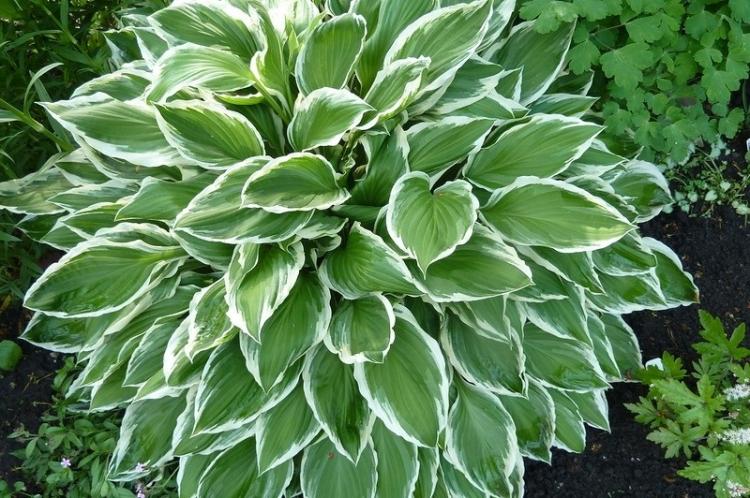
Khosta plantain
A large ornamental variety with large sinewy leaves really resembles a plantain. But in the middle of summer, it is covered with tall, up to 70 cm, peduncles with large fragrant flowers. An unusual feature is that this species belongs to the night - the flowers open at dusk.

The host is bloated
The northeastern Chinese variety is considered one of the oldest in European floriculture: it was used back in the 18th century. Tall and wide shrubs topped with the same high peduncles up to 120 cm. Heart-shaped rounded leaves are pointed towards the end and can be one or two colors.
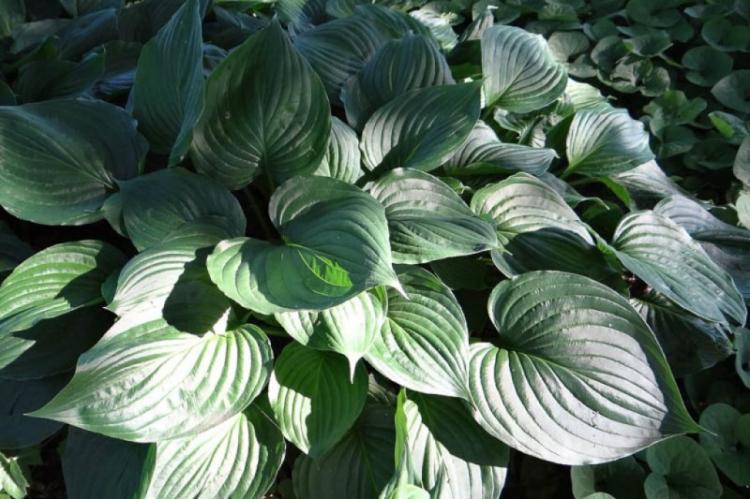
Hosta wavy
A small compact bush with thin long leaves barely reaches 25 cm. The variety owes its name to the wavy light veins that cover the lanceolate leaf plates. It is a great choice for graceful ornamental compositions, alpine slides and miniature gardens.
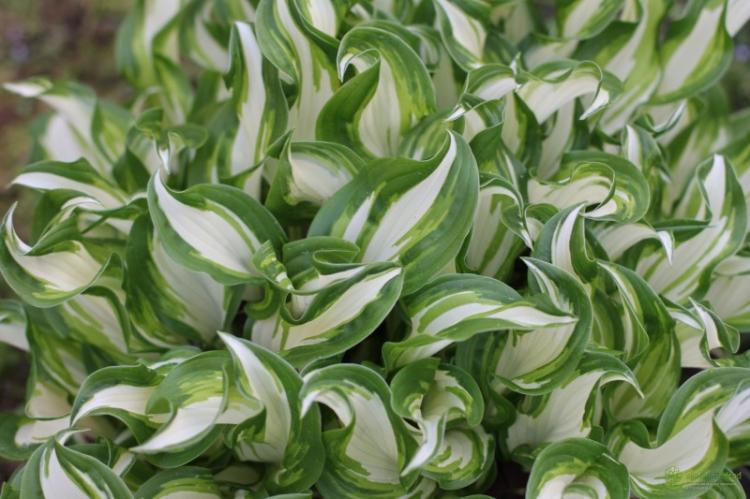
Hosta Fortune
Hosta Fortune is a small dense bush with large expressive heart-shaped leaves. The variety belongs to flowering and by the end of summer pleases with delicate lavender flowers.
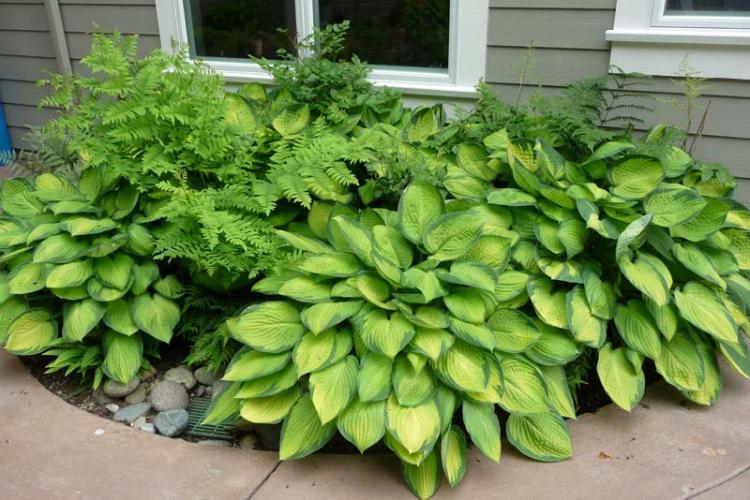
Hosta rectifiable
An interesting Far Eastern variety is notable for the fact that its large and resilient leaves seem to stretch up towards the sun. It is a very hygrophilous species that thrives on swampy soil or right next to water bodies.
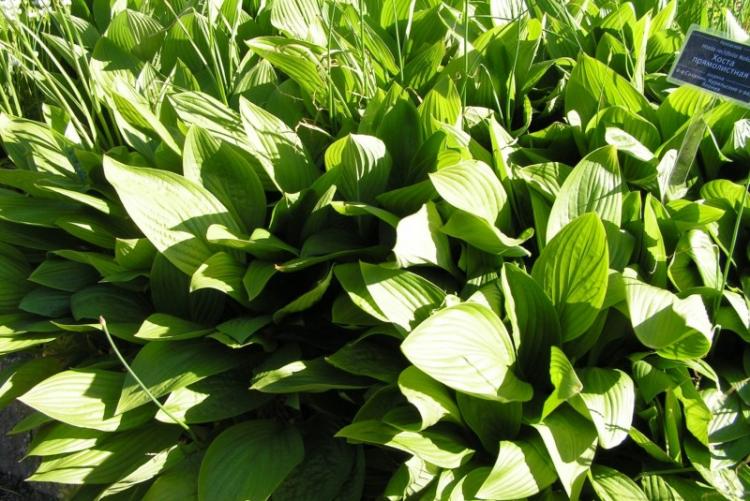
Khosta curly
Unlike straight-leaved varieties, curly hostas have large wavy leaf plates.The bright green foliage is framed by the same bright white stripe clearly along the edge. Expressive purple flowers appear on high peduncles in season.
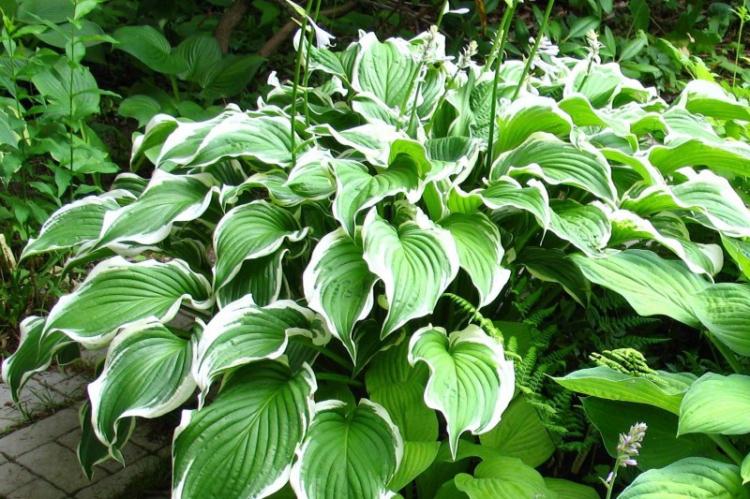
Hosta Aureum Maculata
An unusual variegated hybrid is interesting for its colorful leaves and belongs to the chameleon varieties. The center light plate is covered with cream, yellow and green veins with a dark border around the edges. By the end of the season or with a lack of color, the leaves simply turn green and the color evens out.
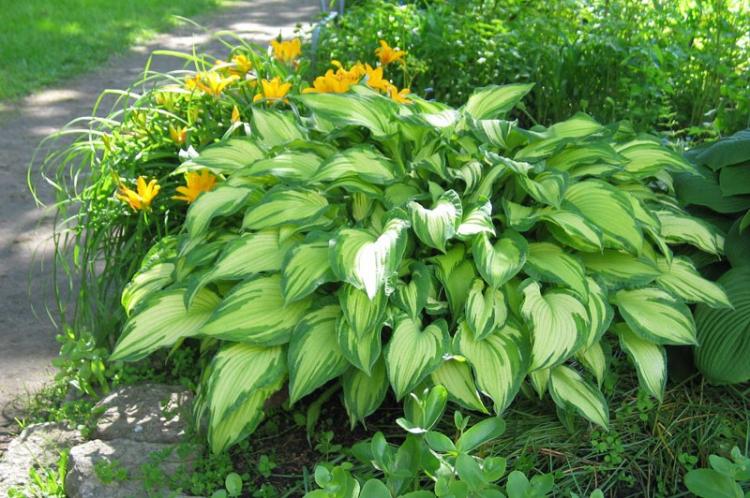
Hosta Siebold
It is impossible not to recognize this powerful and large hosta: it is immediately given out by large egg-shaped textured leaves up to 40 cm.The green plates seem to be covered with a blue or bluish bloom, and this feature is easily transmitted to other varieties when crossed. Hosta Siebold blooms with small delicate pale lilac flowers.
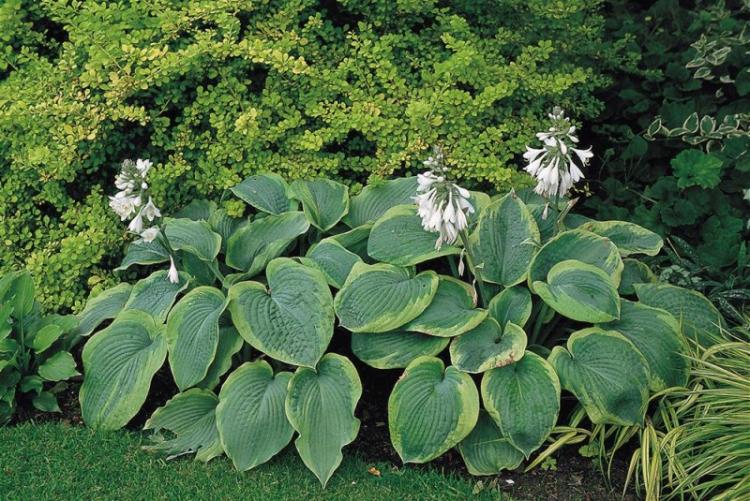
Hosta small
One of the most compact and miniature varieties does not grow taller than 15 cm and has unusual thin curly leaves. Such a hosta is good not only in mini-compositions in the garden, but also in pots on balconies or in houses.
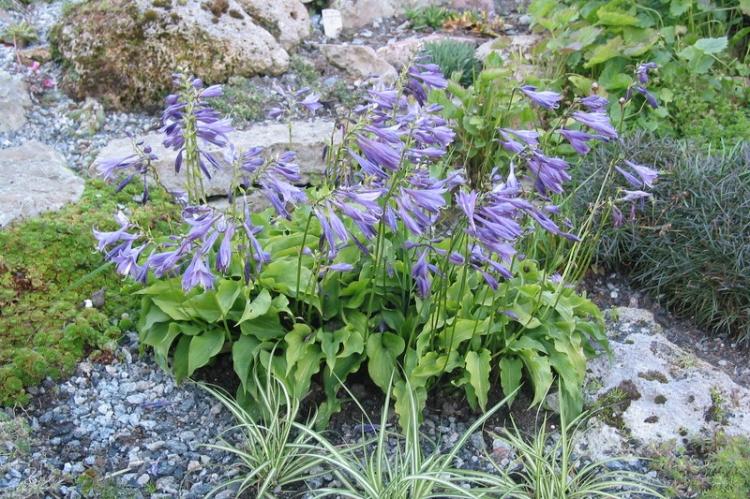
Hosta care
If you immediately choose the right place and soil, the hosta is undemanding in care and maintenance. She needs light, moist and drained soil, a little space, and minimal attention.
Temperature
Khosta easily tolerates different temperatures of mid-latitudes, including frosty winters. But if the temperature is too low, it is better to cover the plant additionally. Small sprouts, which are still too early to be planted in the ground, can be safely stored in a dark, cool place at temperatures above +5 degrees.
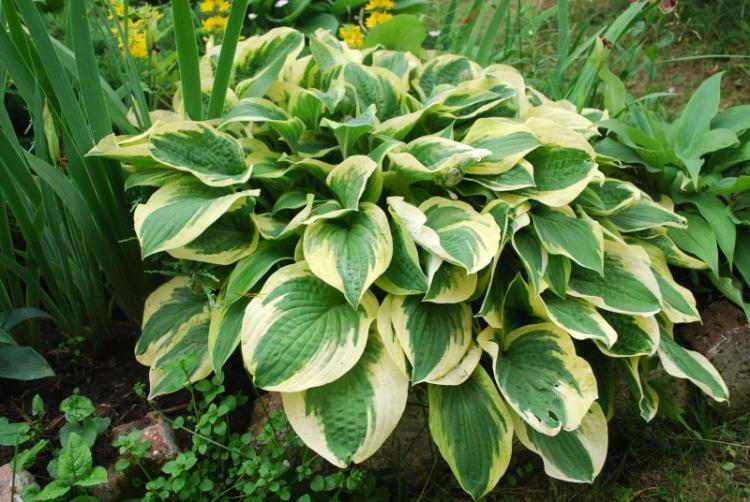
Lighting
It is believed that the hosta likes shaded areas, but in reality it depends on the particular strain. The lighter the leaves, the more sunlight the plant will need, and the blue and green species prefer shade. In any case, it is important to avoid direct sunlight, otherwise burns may occur.
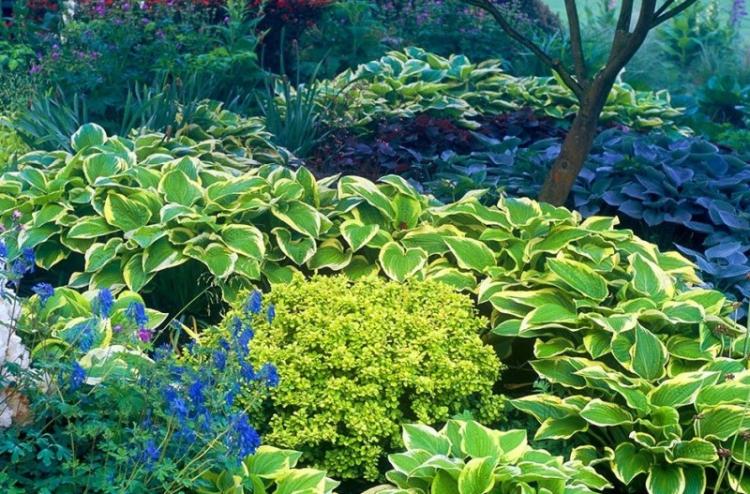
Watering
The plant loves moisture and regular systematic watering, but it is important not to overmoisten the soil. The recommended frequency during the active season is 2-3 times a week, but be guided by the weather and soil conditions.
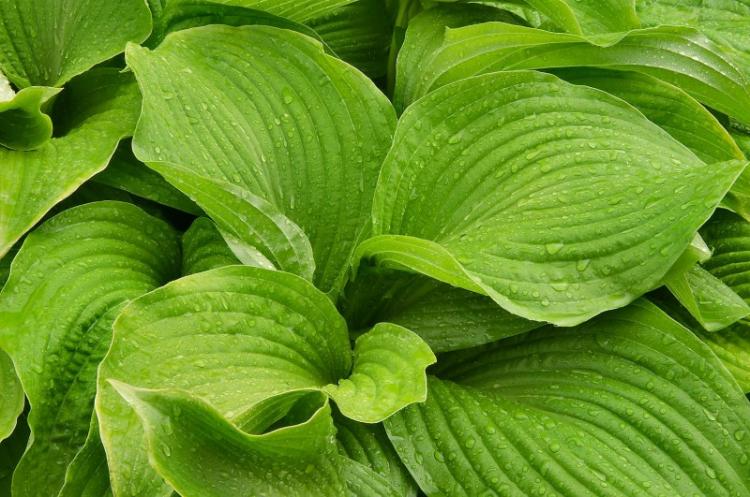
Fertilizers and feeding
The host needs feeding and fertilization three times per season: in the active phase of growth, during flowering and immediately after it. Use complex formulations containing phosphorus, potassium and nitrogen. Organic fertilizers, which are recommended to be applied in the fall, have proven themselves well.
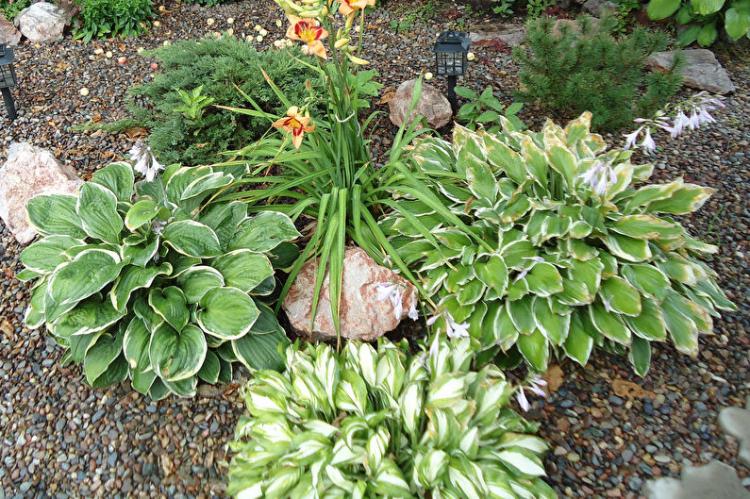
Pruning
Hosta does not need the obligatory complex pruning or shaping, but it is better to remove young arrows and old leaves to make the bush look neater. This does not apply only to varieties that bloom profusely and actively. Otherwise, it is enough to periodically weed the bushes, remove weeds and make sure that the host does not grow too thickly.
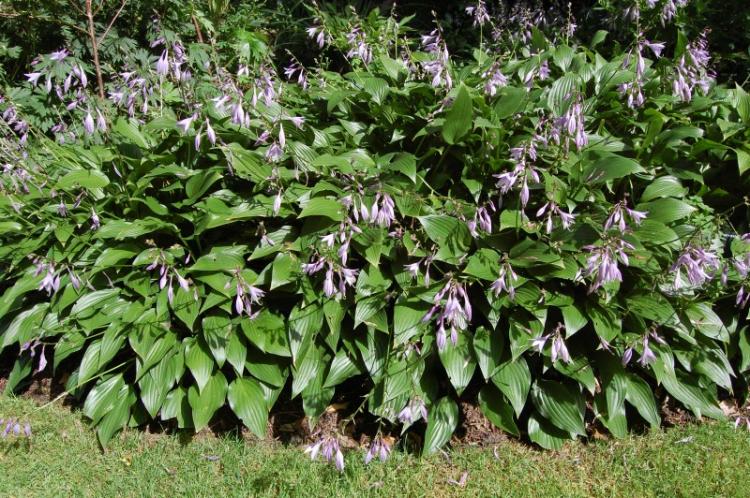
Planting and breeding hosts
The host can be germinated from seeds, but this is a very long and laborious process, although its germination rate is quite high. When planting, be sure to use a growth stimulant and pre-soak the seeds in the cold. For disinfection, use a weak solution of potassium permanganate, which can be used to process pots.
Remember that the hosta always grows and develops slowly, and in the process it can lose the characteristic features of the variety. Therefore, if you need a clear and definite result, it is better to choose other methods of reproduction.
In one place the host feels great for decades, but during this time it grows a lot. Therefore, every 3-4 years it is recommended to plant a shrub, and at the same time, to propagate it by dividing it. Delhi bushes in late spring or late summer, and the cuttings can be immediately planted in the ground, but for the first time they must be shaded.
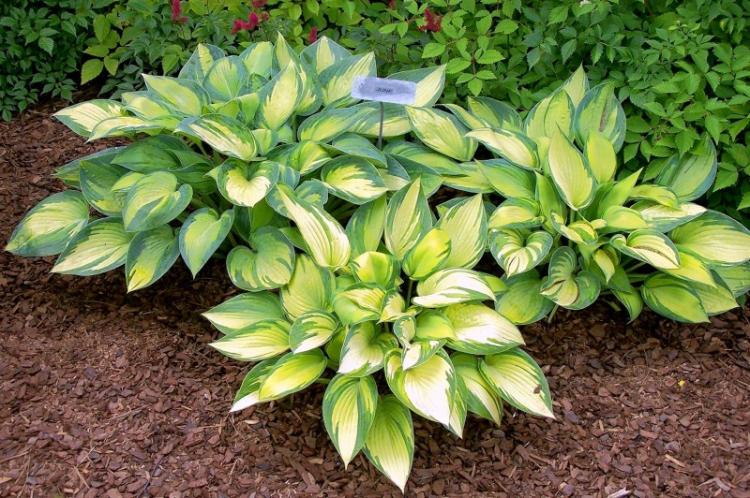
Pest and disease control
Hosta is an unpretentious perennial, resistant to diseases and parasites. She does not have many typical problems, and the most striking of them is phyllostictosis with brown and yellow spots on the leaf blades.When the first signs of any fungal diseases appear, all affected areas must be removed and burned, and the plant itself must be treated with fungicides.
The main enemy of the hosts is slugs, which feed on foliage and make large holes in it. But they can be scared off if you mulch the soil around the bush with stones, expanded clay, rubble, broken brick or shells in advance. To combat other parasites, such as caterpillars and aphids, regular preventive treatment with insecticides is sufficient.
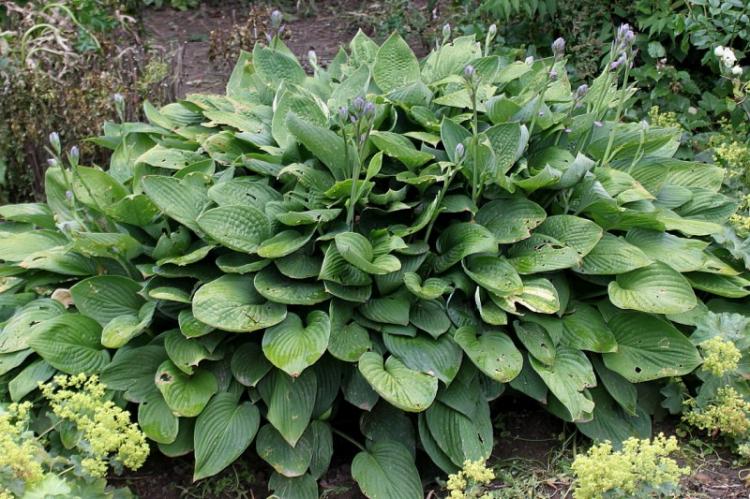
Hosta - photo
Ornamental foliage of the hosta will ideally complement garden seedlings or landscape compositions. As a visual confirmation of these words, we offer you a whole selection of photos!
